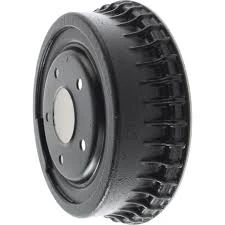
-
 Afrikaans
Afrikaans -
 Albanian
Albanian -
 Amharic
Amharic -
 Arabic
Arabic -
 Armenian
Armenian -
 Azerbaijani
Azerbaijani -
 Basque
Basque -
 Belarusian
Belarusian -
 Bengali
Bengali -
 Bosnian
Bosnian -
 Bulgarian
Bulgarian -
 Catalan
Catalan -
 Cebuano
Cebuano -
 Corsican
Corsican -
 Croatian
Croatian -
 Czech
Czech -
 Danish
Danish -
 Dutch
Dutch -
 English
English -
 Esperanto
Esperanto -
 Estonian
Estonian -
 Finnish
Finnish -
 French
French -
 Frisian
Frisian -
 Galician
Galician -
 Georgian
Georgian -
 German
German -
 Greek
Greek -
 Gujarati
Gujarati -
 Haitian Creole
Haitian Creole -
 hausa
hausa -
 hawaiian
hawaiian -
 Hebrew
Hebrew -
 Hindi
Hindi -
 Miao
Miao -
 Hungarian
Hungarian -
 Icelandic
Icelandic -
 igbo
igbo -
 Indonesian
Indonesian -
 irish
irish -
 Italian
Italian -
 Japanese
Japanese -
 Javanese
Javanese -
 Kannada
Kannada -
 kazakh
kazakh -
 Khmer
Khmer -
 Rwandese
Rwandese -
 Korean
Korean -
 Kurdish
Kurdish -
 Kyrgyz
Kyrgyz -
 Lao
Lao -
 Latin
Latin -
 Latvian
Latvian -
 Lithuanian
Lithuanian -
 Luxembourgish
Luxembourgish -
 Macedonian
Macedonian -
 Malgashi
Malgashi -
 Malay
Malay -
 Malayalam
Malayalam -
 Maltese
Maltese -
 Maori
Maori -
 Marathi
Marathi -
 Mongolian
Mongolian -
 Myanmar
Myanmar -
 Nepali
Nepali -
 Norwegian
Norwegian -
 Norwegian
Norwegian -
 Occitan
Occitan -
 Pashto
Pashto -
 Persian
Persian -
 Polish
Polish -
 Portuguese
Portuguese -
 Punjabi
Punjabi -
 Romanian
Romanian -
 Russian
Russian -
 Samoan
Samoan -
 Scottish Gaelic
Scottish Gaelic -
 Serbian
Serbian -
 Sesotho
Sesotho -
 Shona
Shona -
 Sindhi
Sindhi -
 Sinhala
Sinhala -
 Slovak
Slovak -
 Slovenian
Slovenian -
 Somali
Somali -
 Spanish
Spanish -
 Sundanese
Sundanese -
 Swahili
Swahili -
 Swedish
Swedish -
 Tagalog
Tagalog -
 Tajik
Tajik -
 Tamil
Tamil -
 Tatar
Tatar -
 Telugu
Telugu -
 Thai
Thai -
 Turkish
Turkish -
 Turkmen
Turkmen -
 Ukrainian
Ukrainian -
 Urdu
Urdu -
 Uighur
Uighur -
 Uzbek
Uzbek -
 Vietnamese
Vietnamese -
 Welsh
Welsh -
 Bantu
Bantu -
 Yiddish
Yiddish -
 Yoruba
Yoruba -
 Zulu
Zulu
Understanding Drum Brake Specifications and Their Importance in Vehicle Performance
Understanding Drum Brake Specifications
Drum brakes are a fundamental component of many vehicles, particularly in older models and in some modern designs, especially in the rear braking systems. They are pivotal for providing reliable stopping power. Understanding drum brake specifications is essential for anyone involved in vehicle maintenance, repair, or design.
1. Basic Components of Drum Brakes
A drum brake consists of several key components the brake drum, brake shoes, wheel cylinder, return springs, and adjusting mechanisms. The brake drum is a cylindrical part that rotates with the wheel. The brake shoes are curved metal pieces that press against the inner surface of the drum when braking occurs. The wheel cylinder, located within the brake assembly, acts as a hydraulic actuator, pushing the shoes outward against the drum.
2. Key Specifications
When evaluating drum brakes, various specifications must be considered
- Diameter and Width The diameter of the drum is critical, as it influences the braking force and effectiveness. Common diameters range from 9 to 12 inches. The width of the drum also affects its performance; wider drums can provide better heat dissipation and longer wear life.
- Material Drum brakes are typically made of cast iron or composite materials
. Cast iron is favored for its durability and heat resistance, while composite materials may offer weight savings.drum brake specifications

- Shoe Material The brake shoes are usually lined with a friction material, which can be organic, semi-metallic, or ceramic. Each material has unique characteristics affecting performance, noise, and longevity.
- Adjusting Mechanisms Many drum brake systems include automatic adjusting mechanisms that maintain proper clearance between the shoe and drum. This is crucial for consistent braking performance and minimizing wear.
3. Performance Considerations
The performance of drum brakes is influenced by several factors, including thermal conductivity, load capacity, and friction coefficient. The ability of the brake system to dissipate heat is vital, as overheating can lead to brake fade, significantly decreasing braking efficiency.
4. Maintenance and Inspection
Regular maintenance of drum brakes is necessary to ensure safety and reliability. Key inspection points include checking the thickness of the brake shoes, the condition of the drum, and the functionality of the wheel cylinder and springs. Signs of wear, such as pulsation during braking or unusual noises, warrant immediate attention.
5. Conclusion
Understanding the specifications of drum brakes is crucial for anyone engaged in vehicle maintenance or design. Attention to detail in components and their properties can lead to enhanced safety and performance. Whether you're a mechanic, a vehicle designer, or a curious car owner, knowledge of drum brake systems will serve you well, ensuring vehicles operate optimally and safely. Regular inspections and a solid grasp of these specifications will help maintain the braking performance necessary for safe driving.
-
Safety Features of Red Brake DrumsNewsAug.01,2025
-
Rear Drum Brakes Replacement for Older VehiclesNewsAug.01,2025
-
Professional Brake Drum Turning Services ExplainedNewsAug.01,2025
-
How Brake Drum and Rotor Puller WorksNewsAug.01,2025
-
Brakes and Drums CompatibilityNewsAug.01,2025
-
Anticipate Failures in Brake Drum MotorNewsAug.01,2025
-
What Are Drum BrakesNewsJul.07,2025
